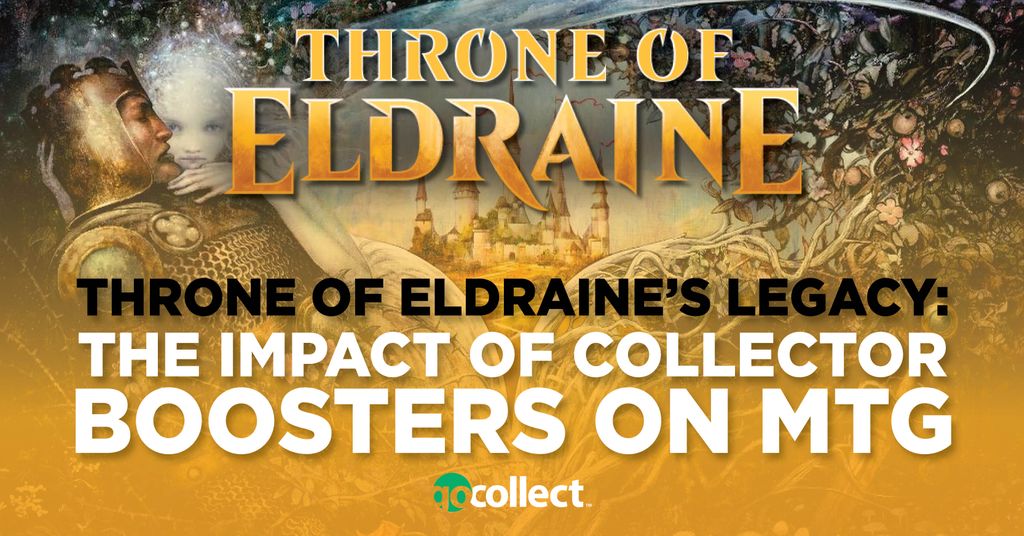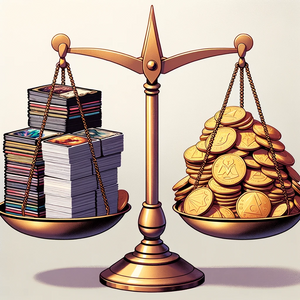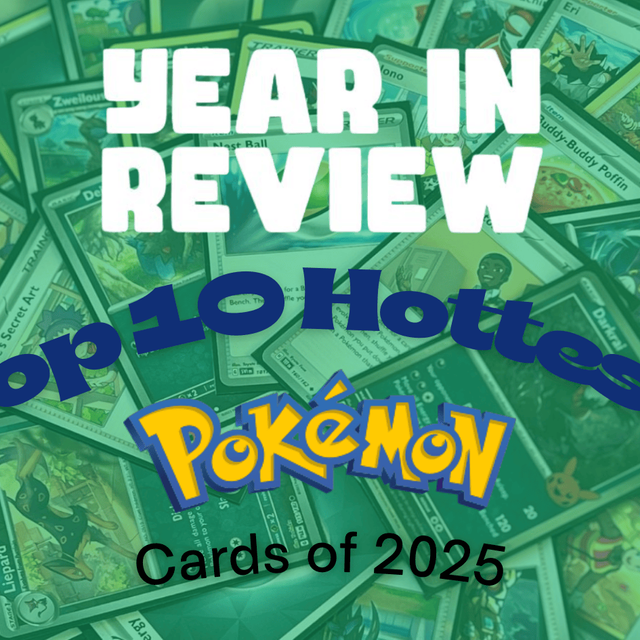
A Realm of Enchantment: Eldraine's Economic Beginning
"Throne of Eldraine" was not just a thematic departure for MTG but also heralded a significant shift in its economic landscape.
The foray into collector boosters, with their premium price point, sparked widespread discussions about their true value, rarity, and the return on investment (ROI) they offered.
The Rise of Collector Boosters: A Market Analysis
Collector boosters were MTG's audacious venture. Designed for a niche audience craving premium card versions, the key uncertainty was the market's reception.
Initial Reception:
While the allure of exclusive art, alternate frames, and special foils captivated many, the associated price tag stirred debate. Evaluating the real worth of these boosters became a community-wide discourse.
Price Evolution:
Over the ensuing years, the price trends of Eldraine's draft and collector boosters painted an intriguing picture. Draft packs, MTG's long-standing staple, surged in price from €90 to €132, possibly due to Eldraine's widespread appeal and draft's inherent demand.
Conversely, collector boosters, despite their novelty, saw a more contained climb from €190 to €230. My personal purchasing data illuminates this contrast: draft packs swelled by 46.7%, while collector boosters rose by only 21.1%. Such differential growth spurred players to scrutinize the tangible benefits of collector boosters and weigh the ROI of each booster type.
Card Values & Secondary Market:
The secondary market, a barometer for individual card values, showed that initial high prices for collector booster exclusives, buoyed by their novelty and limited availability, eventually stabilized. The playability of these cards also factored in; cards finding spots in competitive decks maintained or increased in value, while others, more collectible in nature, saw diminished demand.
The Impact on the MTG Ecosystem
Collector boosters reshaped the MTG economic fabric. For retailers, they promised richer margins but also carried the risk of stagnant stock due to their heftier price. For players, while offering a tangible piece of MTG history, they raised questions about MTG's collecting future. Would following sets maintain or elevate card values? And as collector boosters became more regular, would their initial allure wane?
Furthermore, the market's division due to collector boosters has implications for liquidity. Draft boosters, with their broader appeal and higher sales volume, ensure better liquidity. Their consistent performance, especially as Eldraine garners renewed attention, reinforces my perspective that draft boosters remain the optimal choice for both new and seasoned investors.
Conclusion
Looking back, "Throne of Eldraine" and its introduction of collector boosters will be remembered as a watershed moment in MTG's journey. While the set's enchanting tales and innovative mechanics have secured its place in MTG lore, the economic ripples from the collector boosters will influence market strategies for years to come.
As the MTG universe evolves, the insights gleaned from Eldraine's collector boosters will guide its trajectory, reminding us of the delicate balance between novelty and sustained value.







